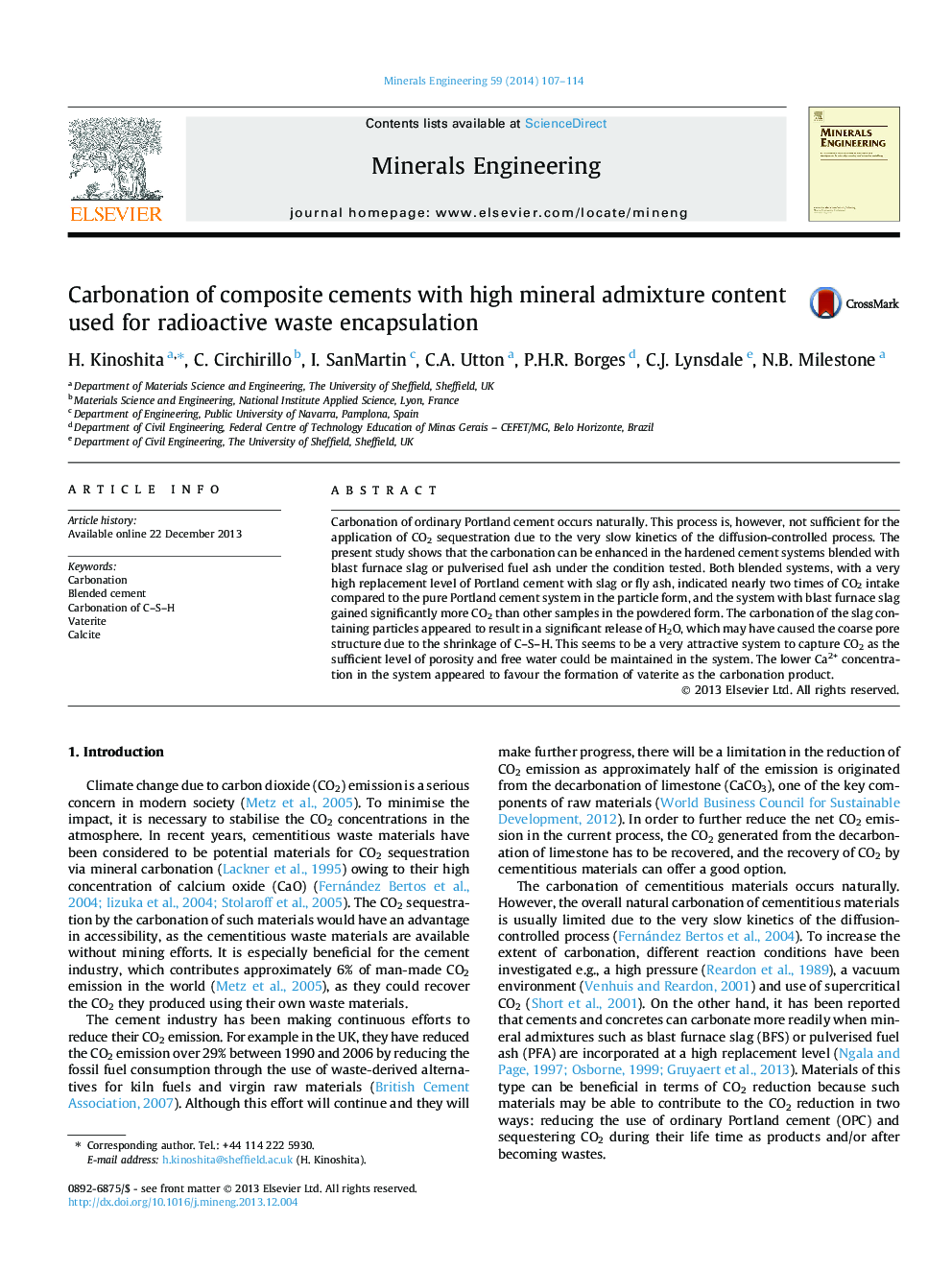| Article ID | Journal | Published Year | Pages | File Type |
|---|---|---|---|---|
| 233335 | Minerals Engineering | 2014 | 8 Pages |
•BFS–OPC and PFA–OPC particles showed a larger CO2 gain than that of the neat OPC.•Carbonation of C–S–H in BFS–OPC system released a significant amount of water.•Carbonation of C–S–H in BFS–OPC system resulted in grain-like porous products.•Water retention and slower hydration favoured the vaterite formation in BFS–OPC.
Carbonation of ordinary Portland cement occurs naturally. This process is, however, not sufficient for the application of CO2 sequestration due to the very slow kinetics of the diffusion-controlled process. The present study shows that the carbonation can be enhanced in the hardened cement systems blended with blast furnace slag or pulverised fuel ash under the condition tested. Both blended systems, with a very high replacement level of Portland cement with slag or fly ash, indicated nearly two times of CO2 intake compared to the pure Portland cement system in the particle form, and the system with blast furnace slag gained significantly more CO2 than other samples in the powdered form. The carbonation of the slag containing particles appeared to result in a significant release of H2O, which may have caused the coarse pore structure due to the shrinkage of C–S–H. This seems to be a very attractive system to capture CO2 as the sufficient level of porosity and free water could be maintained in the system. The lower Ca2+ concentration in the system appeared to favour the formation of vaterite as the carbonation product.
